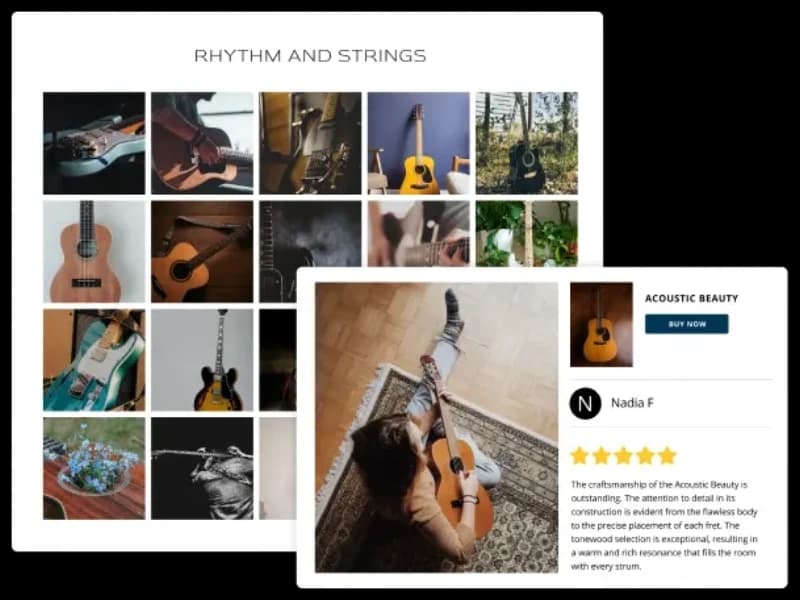Turn Customer Photos & Videos into On-Brand Proof
Collect media-rich reviews, curate Instagram content, and publish shoppable galleries that convert browsers into buyers.
Trusted by 500+ ecommerce teams for visual social proof
Trusted by leading brands
Built for Merchandising, Marketing, and CX Teams
Rally every team around authentic customer stories that drive confidence and conversion.
Ecommerce Brands
Boost PDP conversion with real customer photos and videos right at the moment of decision.
Fashion & Beauty
Help shoppers see fit, texture, and styling in real life with curated lookbooks and galleries.
Home & Outdoor
Showcase products in context-of-use so customers can envision your products in their world.
"We switched from Yotpo and unlocked more visual content at a fraction of the cost. RaveCapture makes it easy for customers to share photos and videos we can showcase across the site."

Collect Everywhere, Curate Smart
Invite customer photos and videos from every touchpoint, then moderate and organize them in minutes.

Make UGC Shoppable & Conversion-Focused
Turn visual inspiration into direct revenue with on-brand overlays, product tagging, and curated layouts.

Showcase UGC Everywhere That Matters
Publish visual proof across PDPs, home, email, and social—keeping every touchpoint fresh and authentic.
Ecommerce Integrations
Connect your store in minutes. Automate requests, keep ratings continuous.









Shopify, WooCommerce, BigCommerce, Magento, OpenCart, PrestaShop, Neto, Shift4Shop, Volusion, Custom API
Connect your storeKeep UGC Programs Organized and On-Brand
Everything your team needs to manage visual content at scale—without losing speed or compliance.
Audience Filters
Segment by product, collection, location, or score to build the perfect visual mix for any page.
Workflow Automation
Trigger approvals, send assets to marketing, or auto-publish once content meets your rules.
Rights Management
Track permissions and usage windows so every photo and video stays compliant.
Performance Reporting
Tie engagement and conversion lifts back to specific assets to prove ROI.
UGC Playbooks Ready for Your Next Campaign
Mix and match the workflows that best fit your merchandising calendar and lifecycle programs.
Launch a Shoppable Gallery
Stand up a visual gallery for seasonal campaigns or hero products in minutes, complete with shoppable overlays.
See gallery inspirationRefresh PDPs with Real Customer Media
Embed curated photo/video blocks on PDPs to reduce returns and highlight real-world use cases.
Strengthen PDP proofFuel Lifecycle Marketing
Send top-performing visuals into email and social sequences to extend the life of every customer story.
Explore marketing ideasHow Brands Scale Visual Social Proof with RaveCapture
"The RaveCapture team goes above and beyond. Our UGC galleries look incredible and the moderation tools keep everything on-brand."
"Authentic customer photos outperform studio shots. RaveCapture keeps the content flowing and our PDPs fresh."























